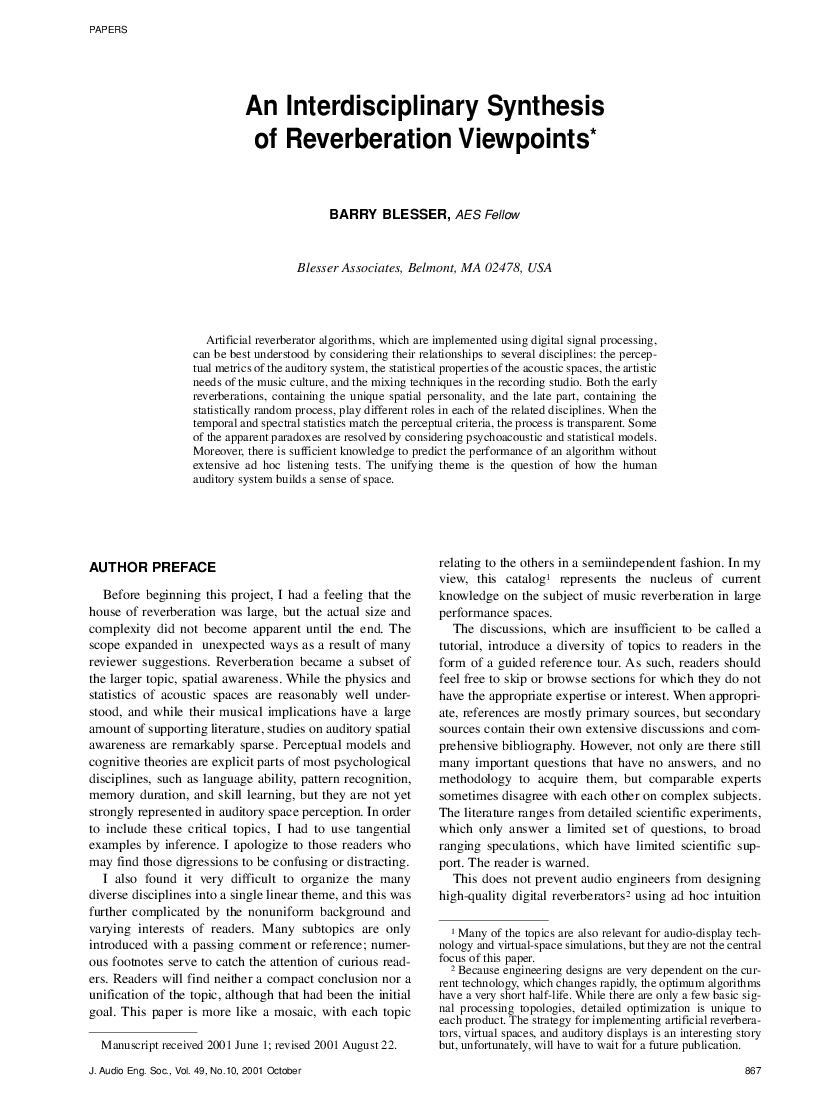Home / Publications / E-library page
You are currently logged in as an
Institutional Subscriber.
If you would like to logout,
please click on the button below.
Home / Publications / E-library page
Only AES members and Institutional Journal Subscribers can download
Artificial reverberator algorithms, which are implemented using digital signal processing, can be best understood by considering their relationships to several disciplines: the perceptual metrics of the auditory system, the statistical properties of the acoustic spaces, the artistic needs of the music culture, and the mixing techniques in the recording studio. Both the early reverberations, containing the unique spatial personality, and the late part, containing the statistically random process, play different roles in each of the related disciplines. When the temporal and spectral statistics match the perceptual criteria, the process is transparent. Some of the apparent paradoxes are resolved by considering psychoacoustic and statistical models. Moreover, there is sufficient knowledge to predict the performance of an algorithm without extensive ad hoc listening tests. The unifying theme is the question of how the human auditory system builds a sense of space.
Author (s): Blesser, Barry A.
Affiliation:
Blesser Associates, Belmont, MA
(See document for exact affiliation information.)
Publication Date:
2001-10-06
Import into BibTeX
Permalink: https://aes2.org/publications/elibrary-page/?id=10176
(762KB)
Click to purchase paper as a non-member or login as an AES member. If your company or school subscribes to the E-Library then switch to the institutional version. If you are not an AES member Join the AES. If you need to check your member status, login to the Member Portal.

Blesser, Barry A.; 2001; An Interdisciplinary Synthesis of Reverberation Viewpoints [PDF]; Blesser Associates, Belmont, MA; Paper ; Available from: https://aes2.org/publications/elibrary-page/?id=10176
Blesser, Barry A.; An Interdisciplinary Synthesis of Reverberation Viewpoints [PDF]; Blesser Associates, Belmont, MA; Paper ; 2001 Available: https://aes2.org/publications/elibrary-page/?id=10176